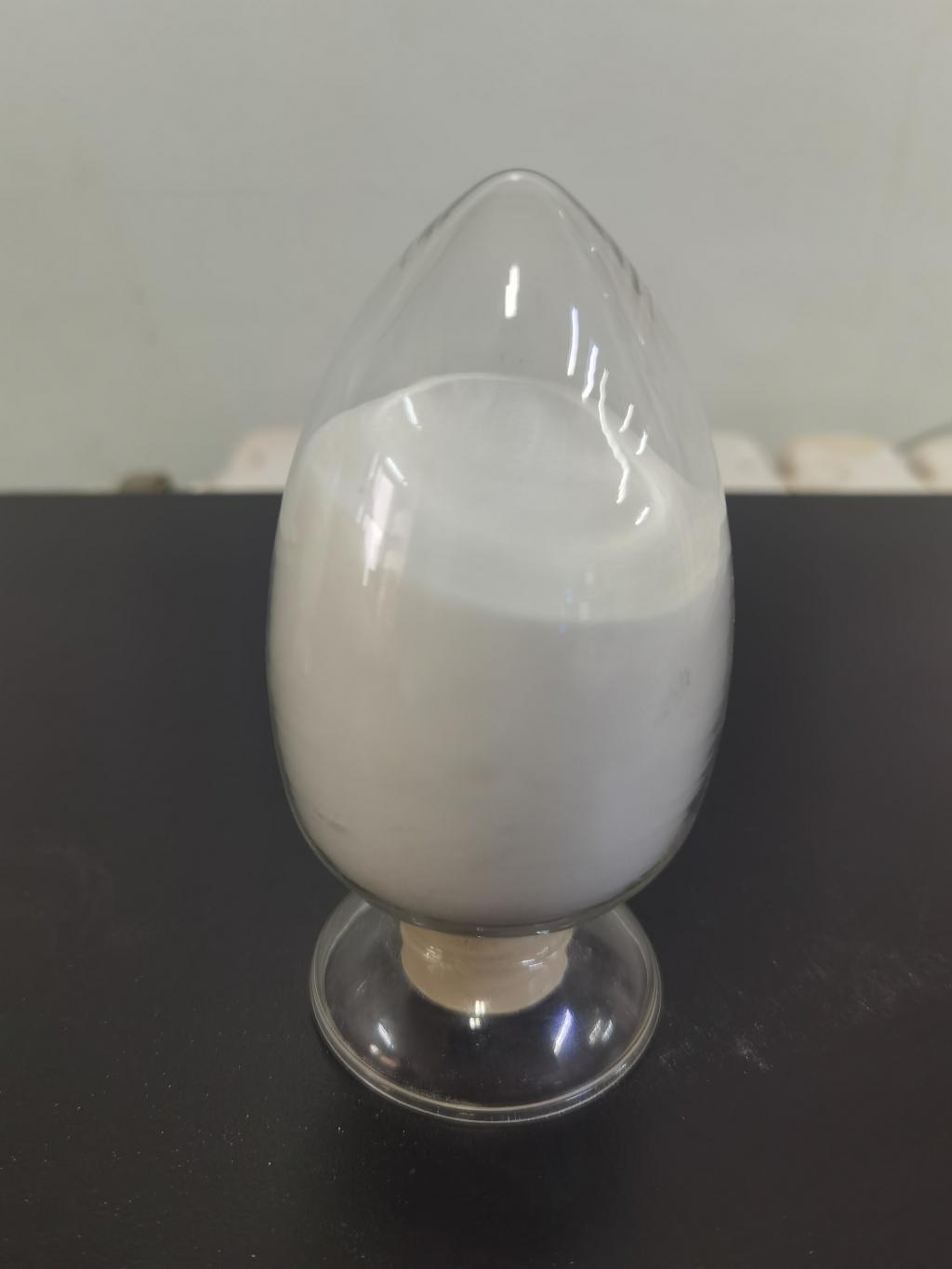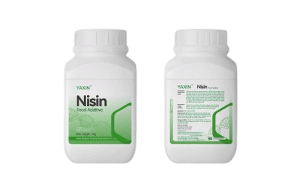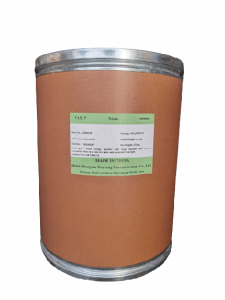Tel:+8618231198596

News
 CONTACT
CONTACT
 CONTACT
CONTACT
- Linkman:Linda Yao
- Tel: +8618231198596
- Email:linda.yao@dcpharma.cn
- Linkman:CHARLES.WANG
- Department:Overseas
- Tel: 0086 0311-85537378 0086 0311-85539701
News
The potential of ε-Polylysine hydrochloride in reducing food waste through extended freshness
TIME:2024-10-29
Understanding ε-Polylysine Hydrochloride
ε-Polylysine is a naturally occurring peptide produced by the fermentation of Streptomyces albulus bacteria. This compound, particularly in its hydrochloride form, is valued for its broad-spectrum antimicrobial activity, capable of inhibiting the growth of both Gram-positive and some Gram-negative bacteria, as well as molds and yeasts. It has been granted “Generally Recognized as Safe” (GRAS) status by the U.S. Food and Drug Administration, making it suitable for food applications. By disrupting the integrity of microbial cell membranes, ε-Polylysine hydrochloride effectively kills or inhibits pathogens and spoilage organisms, making it an ideal preservative for extending the shelf life of perishable foods.
The Link Between Extended Freshness and Food Waste Reduction
Food waste often occurs because perishable items—such as dairy, meat, fresh produce, and ready-to-eat meals—spoil before they are consumed. By slowing microbial growth, ε-Polylysine hydrochloride helps extend the freshness of these foods, making it possible for them to stay on shelves longer and reducing the likelihood of waste at both the consumer and retail levels. Key areas where ε-PL can have a meaningful impact on food waste include:
Reduced Spoilage Rates: The antimicrobial properties of ε-PL can significantly reduce spoilage rates, especially in high-moisture, nutrient-dense foods that are typically more susceptible to microbial growth. Slowing spoilage means that foods remain safe and fresh for longer periods, reducing waste due to early expiration.
Improved Shelf Life and Distribution Efficiency: Food that stays fresh longer can be transported and stored over extended periods, allowing for greater flexibility in distribution and retail. With ε-PL, perishable products are less likely to spoil before reaching their destination, decreasing the amount of food lost during transport and storage.
Enhanced Consumer Convenience: For consumers, ε-Polylysine hydrochloride can mean longer-lasting freshness in foods stored at home, reducing the chances of discarding unused products. Households are a major source of food waste, and preservatives like ε-PL help extend product life, encouraging efficient usage and minimizing spoilage in home settings.
Applications of ε-Polylysine Hydrochloride in Perishable Foods
ε-Polylysine hydrochloride is versatile and can be applied in various ways to different food products. Here’s how it can be used in several key food categories prone to high levels of waste:
Dairy Products: Dairy items such as milk, yogurt, cheese, and cream are highly perishable due to their high moisture content and nutrient density, which support microbial growth. Adding ε-PL to dairy products helps reduce bacterial and fungal contamination, extending shelf life and enhancing product stability. This is especially beneficial for yogurt and soft cheeses, which are often discarded due to spoilage.
Meat and Poultry: Fresh meat and poultry are highly susceptible to contamination by spoilage bacteria and foodborne pathogens. Applying ε-Polylysine hydrochloride as a surface treatment or incorporating it into packaging can inhibit bacterial growth, helping to preserve freshness and reduce the risk of foodborne illnesses. With ε-PL, fresh meats last longer, reducing food waste in retail and household settings.
Fruits and Vegetables: Fresh produce, especially minimally processed items like cut fruits and leafy greens, often spoils before being consumed. Edible coatings containing ε-PL create a natural protective barrier that slows microbial growth without altering the taste or quality of the produce. These coatings are particularly useful for reducing waste in high-turnover produce items such as berries and pre-cut salads.
Ready-to-Eat Meals: Ready-to-eat meals are convenient but have limited shelf lives, as they contain fresh or lightly processed ingredients prone to spoilage. By incorporating ε-Polylysine hydrochloride, manufacturers can reduce microbial growth and extend the shelf life of these meals. This added freshness reduces the need for preservatives while maintaining a natural label, helping consumers enjoy fresh meals longer and reducing food waste due to spoilage.
Advantages of Using ε-Polylysine Hydrochloride in Food Preservation
Natural and Consumer-Friendly: ε-Polylysine hydrochloride is a natural preservative, aligning with consumer preferences for clean-label products without synthetic additives. Its GRAS status and natural origin make it an attractive option for health-conscious consumers who want extended freshness without synthetic chemicals.
Broad-Spectrum Antimicrobial Activity: ε-PL effectively targets a wide range of spoilage microorganisms and pathogens, including bacteria, yeasts, and molds. This broad antimicrobial activity enables it to be used in various food products and food systems, providing comprehensive protection against spoilage.
Effective at Low Concentrations: One of the benefits of ε-Polylysine hydrochloride is its potency; only low concentrations are needed to achieve significant antimicrobial effects. This characteristic is particularly advantageous in foods with delicate flavors, as it minimizes any potential impact on taste or texture, preserving the sensory qualities of food.
Temperature Stability: ε-PL remains effective across a broad temperature range, including cold storage and refrigeration. This stability makes it suitable for perishable products that require low-temperature storage, further enhancing its potential to reduce food waste in refrigerated items.
Challenges and Future Directions
While ε-Polylysine hydrochloride offers considerable promise in food preservation, several challenges and research directions can further enhance its impact on reducing food waste:
Combination with Other Natural Preservatives: Research into combining ε-PL with other natural antimicrobials, such as essential oils or organic acids, is ongoing. These combinations can improve antimicrobial efficacy while potentially targeting a wider spectrum of microorganisms, including Gram-negative bacteria that ε-PL alone is less effective against.
Encapsulation and Controlled Release: Encapsulation technologies that allow controlled release of ε-PL in response to environmental conditions can prolong its efficacy, providing sustained protection over extended periods. Controlled release is particularly valuable for products with long shelf lives or those stored at varying temperatures.
Integration with Packaging Materials: Advances in active packaging can enable the integration of ε-Polylysine hydrochloride into packaging films, where it can gradually release antimicrobial compounds, offering continuous protection. This type of packaging would be particularly useful for products with high spoilage risks, like fresh produce, meats, and seafood.
Cost and Regulatory Considerations: While ε-Polylysine hydrochloride is a cost-effective preservative, scaling its use across a wide range of food industries will require continued regulatory support and cost reductions. Collaborations with food industry stakeholders can help drive down costs and promote broader adoption of ε-PL as a sustainable preservation method.
Conclusion
The use of ε-Polylysine hydrochloride in food preservation holds significant potential in the fight against food waste. By extending the freshness and shelf life of perishable items, ε-PL reduces spoilage rates and enhances food quality, allowing consumers and retailers alike to make the most of their food products. As technology advances, the integration of ε-PL into innovative preservation methods such as active packaging and encapsulation will likely broaden its application, making it a valuable tool for sustainable food systems. With its natural origin, broad-spectrum antimicrobial activity, and consumer-friendly appeal, ε-Polylysine hydrochloride is well-positioned to play a key role in reducing food waste and supporting a more sustainable and resilient food supply chain.
- Tel:+8618231198596
- Whatsapp:18231198596
- Chat With Skype







